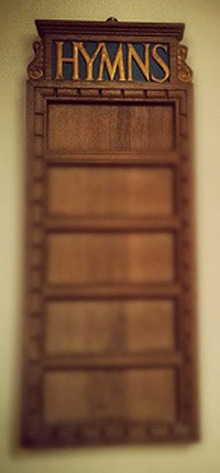With A Song in Your Heart — SING!
Luke 1:39-55
Today’s object lesson is a song. Today we ask our adults to remember a time gone by when we didn’t listen to music on itunes, or the radio or on TV every minute of day. Think back to the day when our songs were in our minds and not planted in our subconscious by professionals—back to the day when we owned our own music—one of a kind—probably never repeated—no copyright needed.
That may predate your congregation.
Ask them if they can remember their childhoods or watching their children or grandchildren blissfully swinging and singing a song of their own invention with each pump of their gangly legs.
Today, it is rare that songs spring from our hearts. The Bible has many notable outbursts of song. Miriam sang when the Israelites were delivered from their Egyptian captors. David sang — often.
It was a different age. They sang without a thought of ratings!
In today’s scripture, Mary sings a beautiful heartfelt song. Ask your congregation to close their eyes as you read the words of the Magnificat from the Bible.
Have them open their eyes and sing the Canticle of the Turning together.
Experience the power of song.
Incidentally, recent research indicates that humans are wired to communicate in song. Early evidence indicates that all cultures may respond to music in very similar ways.
(This came up in our Twitter feed — or we wouldn’t know this to share with you!)
Song is powerful.
Today is a day to remember that we all have a song inside of us. We don’t have to wait for a professional to fine tune it and make it marketable to the masses. Just sing it. God is listening.
PS: (If you really need an object, start the talk with an iphone in your hand, adjusting your earphones as you turn to your congregation.)



